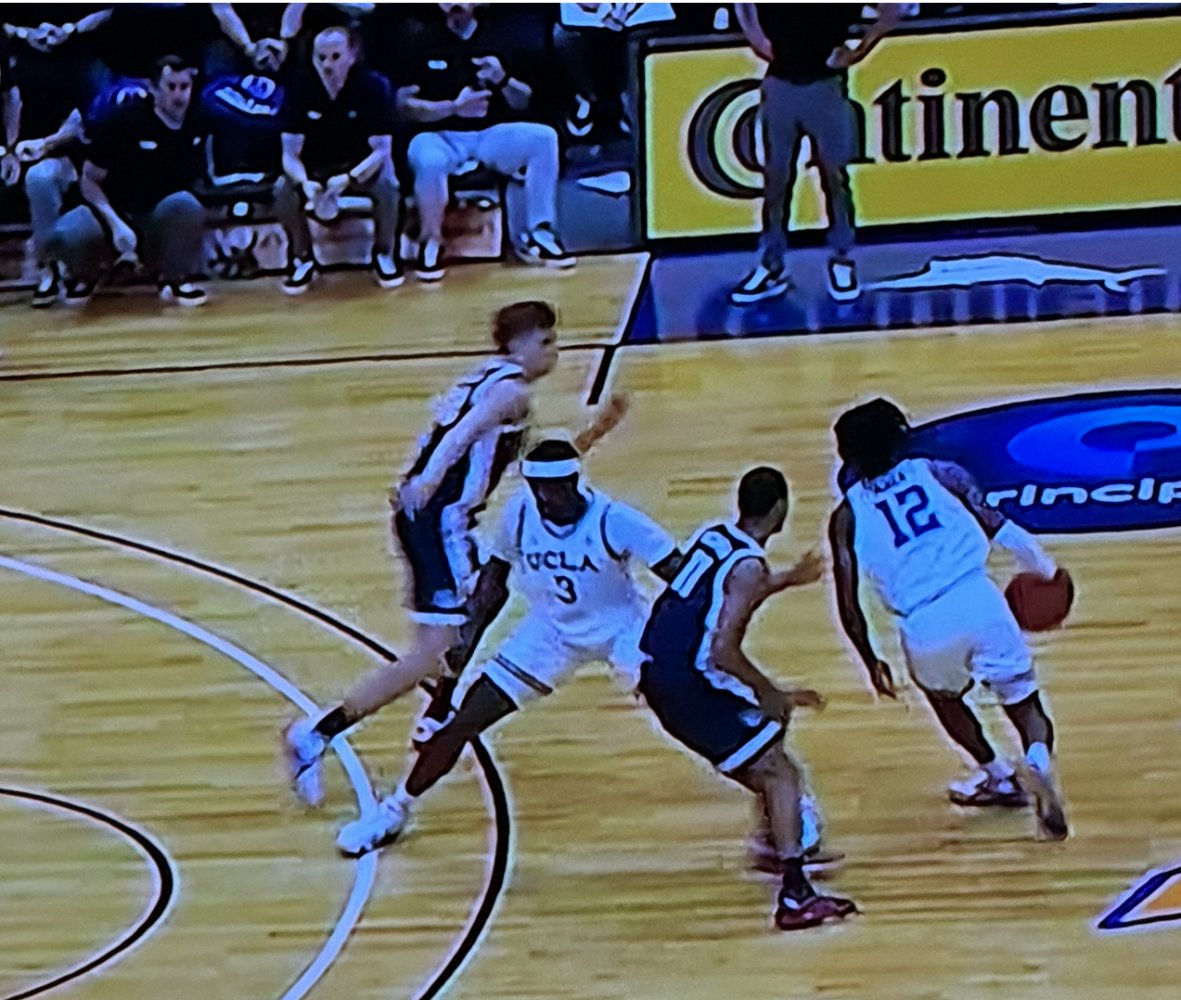You are using an out of date browser. It may not display this or other websites correctly.
You should upgrade or use an alternative browser.
You should upgrade or use an alternative browser.
Can college Bball clean this stuff up?
- Thread starter STEVEHOLT
- Start date
The problem is if the game was called according topretty simple if refs just call the rules.
the rule book there wouldn't be a player left on the
court after the first 10 minutes. As a former ref, your principle
objective is to call the game equally and consistently for both teams.
Entirely different game than Naismith envisioned.
Shrmdougluvr
Give it all to me fool!
- Joined
- Aug 26, 2011
- Messages
- 6,555
- Like
- 11,823
How is this a legal screen? Dude basically doing the splits EVERYTIME he sets one.
Bring your knee up a bit too.
dollarbill44
Hall of Fame
- Joined
- Aug 28, 2011
- Messages
- 9,200
- Like
- 16,300
But that's really just a function of how refereeing has eroded over the years. When I grew up playing (70s-80s), it was called much tighter. For example, if you reached across the dribbler for the ball, you would get called for a foul whether you touched them or not. If you blocked a shot but your bodies met, it was a shooting foul. If a player went to the floor with the ball, you couldn't just fall in him to get a held ball, it was a foul. Screens had to be set straight up and down, no split feet, no elbows out. Fouls got called and you either adapted or fouled out.The problem is if the game was called according to
the rule book there wouldn't be a player left on the
court after the first 10 minutes. As a former ref, your principle
objective is to call the game equally and consistently for both teams.
Entirely different game than Naismith envisioned.
no doubt.. But then again back in that day you were not allowed to take a charge or set a pick either. As a player you had to avoid all contact like his.The problem is if the game was called according to
the rule book there wouldn't be a player left on the
court after the first 10 minutes. As a former ref, your principle
objective is to call the game equally and consistently for both teams.
Entirely different game than Naismith envisioned.
Hoo's That
Living Legend
- Joined
- Aug 15, 2013
- Messages
- 24,726
- Like
- 65,724
If game is called tightly, the players and coaches soon pick up on the fact that it is and start acting accordingly, especially if warned in advance. Start with dribbling behind your back. I was told some years ago by a UVa icon that it is impossible to go behind your back without carrying the ball. The refs let you do it if it's done in one smooth motion. Call it; they'll soon catch on. This isn't the NBA where people pay a lot of money to see the stars play and not to see them sitting on the bench in foul trouble. The teams still matter in college ball. The calls need to be made before someone gets hurt.The problem is if the game was called according to
the rule book there wouldn't be a player left on the
court after the first 10 minutes. As a former ref, your principle
objective is to call the game equally and consistently for both teams.
Entirely different game than Naismith envisioned.
alphaorange
Starter
- Joined
- Aug 26, 2011
- Messages
- 1,733
- Like
- 2,291
If your hand is on the top half of the ball it is not a carry, unless your palm it, Not many guys can palm it during mis dribble.If game is called tightly, the players and coaches soon pick up on the fact that it is and start acting accordingly, especially if warned in advance. Start with dribbling behind your back. I was told some years ago by a UVa icon that it is impossible to go behind your back without carrying the ball. The refs let you do it if it's done in one smooth motion. Call it; they'll soon catch on. This isn't the NBA where people pay a lot of money to see the stars play and not to see them sitting on the bench in foul trouble. The teams still matter in college ball. The calls need to be made before someone gets hurt.
alphaorange
Starter
- Joined
- Aug 26, 2011
- Messages
- 1,733
- Like
- 2,291
You've been able to take a charge for 50+ years. In the seventies, it was just called an offensive foul, not a charge.no doubt.. But then again back in that day you were not allowed to take a charge or set a pick either. As a player you had to avoid all contact like his.
Jimmy Lee was an expert at drawing the foul.You've been able to take a charge for 50+ years. In the seventies, it was just called an offensive foul, not a charge.
dollarbill44
Hall of Fame
- Joined
- Aug 28, 2011
- Messages
- 9,200
- Like
- 16,300
The difference was, you had to be set. If either foot moved at all, it was a blocking foul.You've been able to take a charge for 50+ years. In the seventies, it was just called an offensive foul, not a charge.
Similar threads
- Replies
- 31
- Views
- 3K
- Replies
- 32
- Views
- 2K

